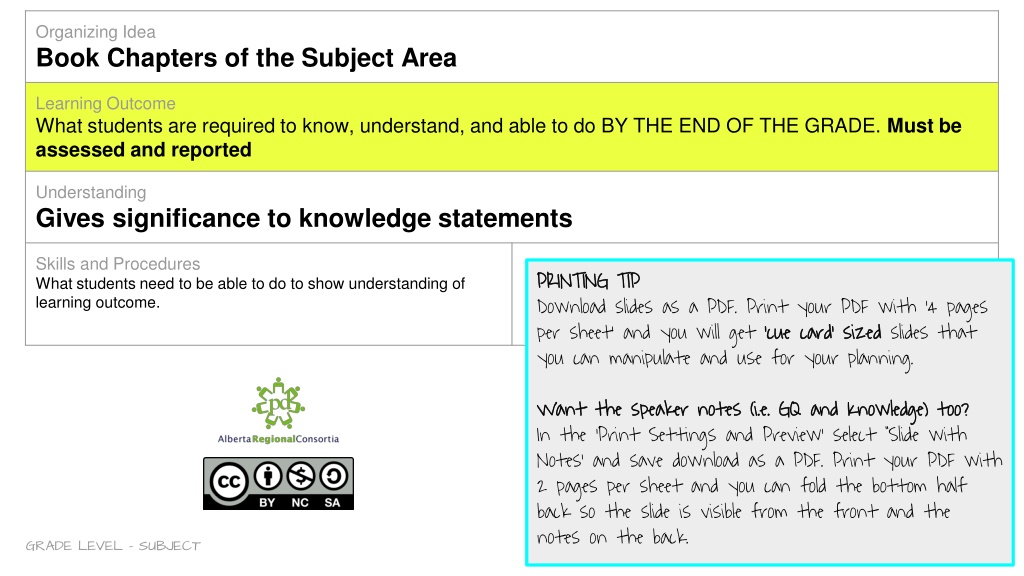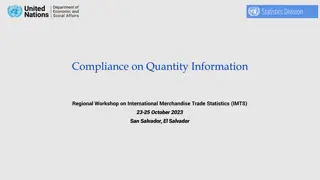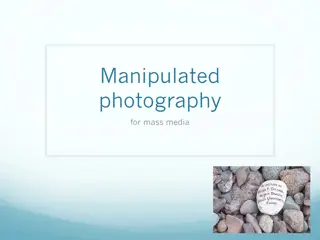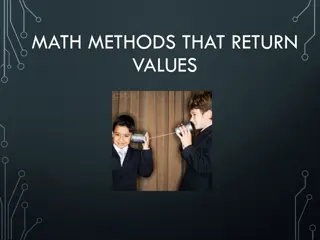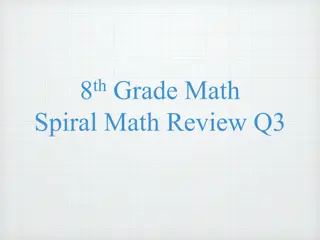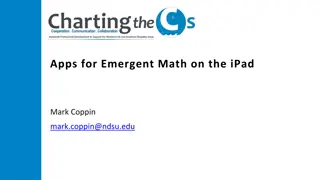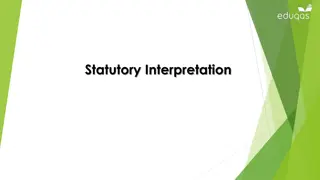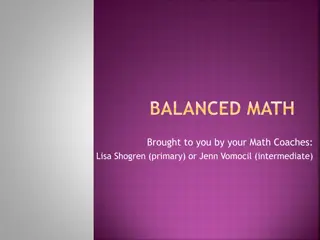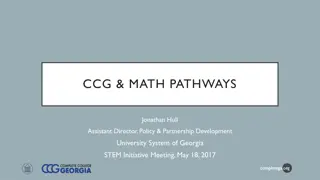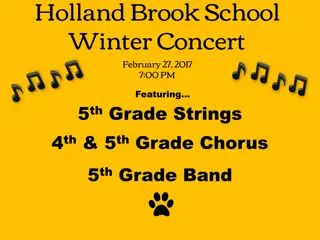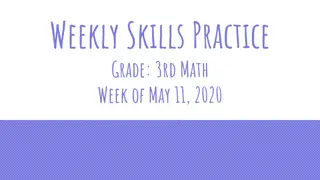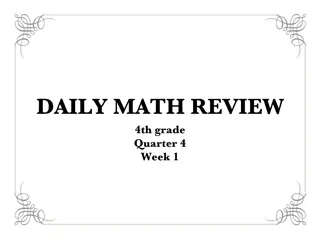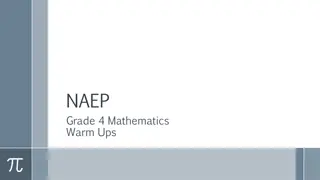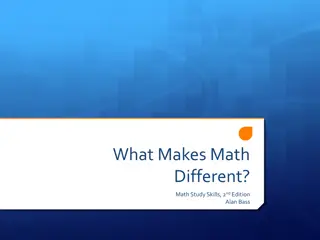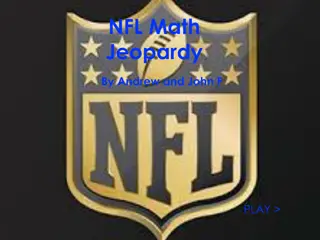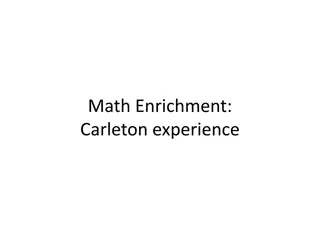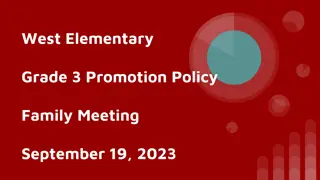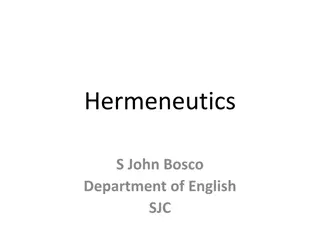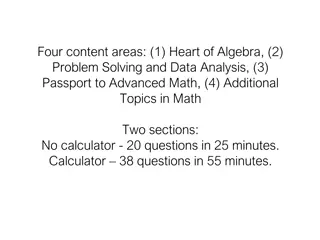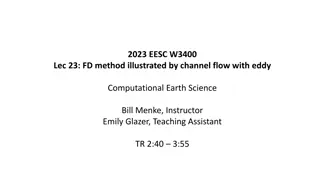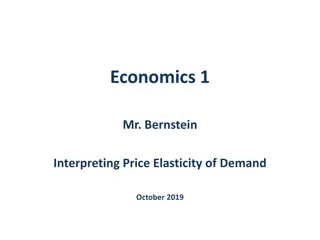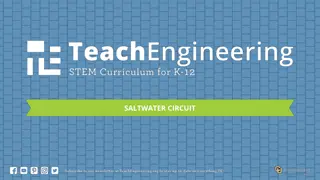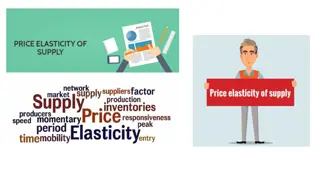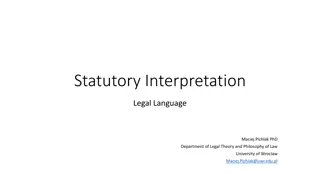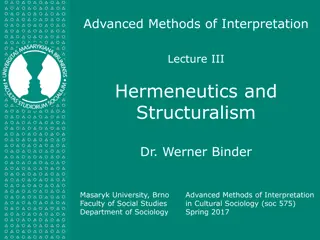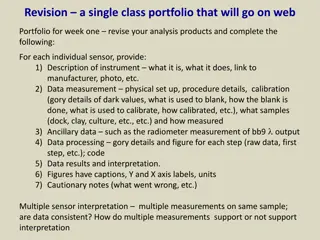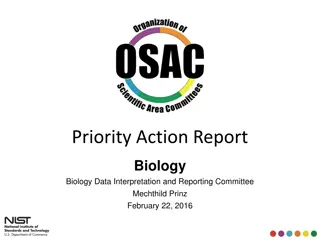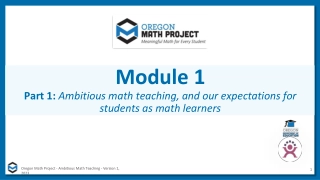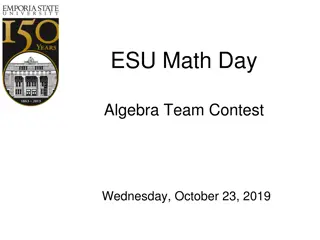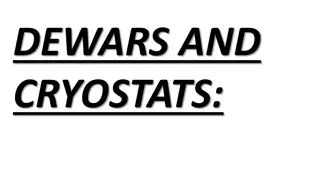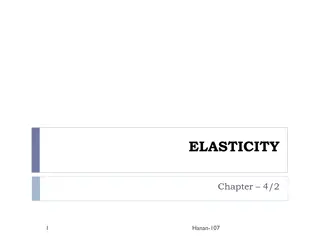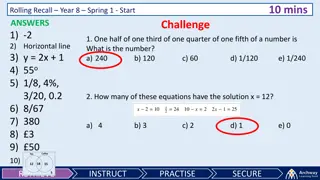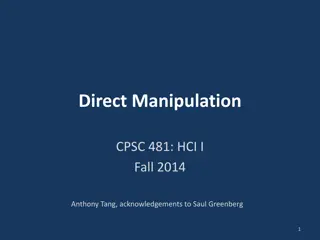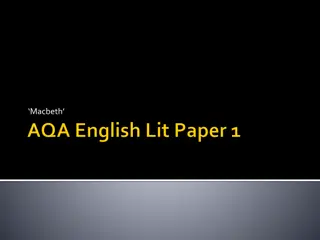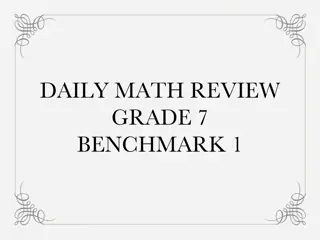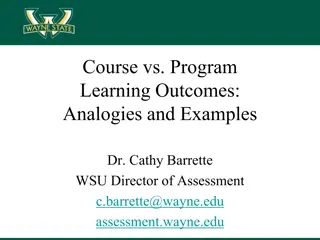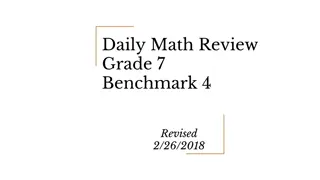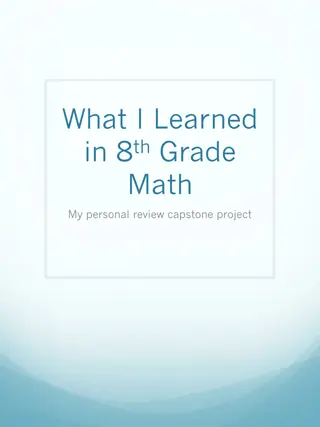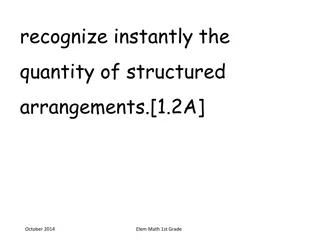Grade One Math Learning Outcomes: Quantity Interpretation and Manipulation
Grade One Math curriculum focuses on developing students' ability to interpret and explain quantities up to 100. Students learn to represent quantities using words, numerals, objects, and pictures. They also understand counting principles, such as hierarchical inclusion, and learn to count forwards and backwards within 100. Additionally, students explore partitioning quantities through sharing and grouping, recognizing equal quantities, and perceiving quantities as compositions of smaller quantities.
Download Presentation

Please find below an Image/Link to download the presentation.
The content on the website is provided AS IS for your information and personal use only. It may not be sold, licensed, or shared on other websites without obtaining consent from the author. Download presentation by click this link. If you encounter any issues during the download, it is possible that the publisher has removed the file from their server.
E N D
Presentation Transcript
Organizing Idea Book Chapters of the Subject Area Learning Outcome What students are required to know, understand, and able to do BY THE END OF THE GRADE. Must be assessed and reported Understanding Gives significance to knowledge statements Skills and Procedures What students need to be able to do to show understanding of learning outcome. PRINTING TIP Download slides as a PDF. Print your PDF with 4 pages per sheet and you will get cue card sized you can manipulate and use for your planning. PRINTING TIP cue card sized slides that Want the speaker notes (i.e. GQ and Knowledge) too? In the Print Settings and Preview select Slide with Notes and save download as a PDF. Print your PDF with 2 pages per sheet and you can fold the bottom half back so the slide is visible from the front and the notes on the back. Want the speaker notes (i.e. GQ and Knowledge) too? UPDATED APRIL 2022 GRADE LEVEL - SUBJECT
Organizing Idea Number Learning Outcome Students interpret and explain quantity to 100. Understanding Quantity is expressed in words and numerals based on patterns. Quantity in the world is represented in multiple ways. Skills and Procedures Represent quantities using words, numerals, objects, or pictures. Identify a quantity of 0 in familiar situations. UPDATED APRIL 2022 GRADE ONE - MATH
Organizing Idea Number Learning Outcome Students interpret and explain quantity to 100. Understanding Each number counted includes all previous numbers (counting principle: hierarchical inclusion). A quantity can be determined by counting more than one object in a set at a time. Skills and Procedures Count within 100, forward by 1s, starting at any number, according to the counting principles. Skip count to 100, forward by 5s and 10s, starting at 0. Skip count to 20, forward by 2s, starting at 0. Count backward from 20 to 0 by 1s. UPDATED APRIL 2022 GRADE ONE - MATH
Organizing Idea Number Learning Outcome Students interpret and explain quantity to 100. Understanding Quantity can be partitioned by sharing or grouping. Skills and Procedures Partition a set of objects by sharing and grouping. Demonstrate conservation of number when sharing or grouping. UPDATED APRIL 2022 GRADE ONE - MATH
Organizing Idea Number Learning Outcome Students interpret and explain quantity to 100. Understanding A quantity can be perceived as the composition of smaller quantities. Skills and Procedures Recognize quantities to 10. UPDATED APRIL 2022 GRADE ONE - MATH
Organizing Idea Number Learning Outcome Students interpret and explain quantity to 100. Understanding Two quantities are equal when there is the same number of objects in both sets. Equality is a balance between two quantities. Skills and Procedures Investigate equal and unequal quantities, including using a balance model. Identify numbers that are one more, two more, one less, and two less than a given number. Represent a quantity relative to another, including symbolically. UPDATED APRIL 2022 GRADE ONE - MATH
Organizing Idea Number Learning Outcome Students examine addition and subtraction within 20. Understanding Addition and subtraction are processes that describe the composition and decomposition of quantity. Skills and Procedures Visualize quantities between 10 and 20 as compositions of 10 and another quantity. Model addition and subtraction within 20 in various ways, including with a balance. Relate addition and subtraction to various contexts involving composition or decomposition of quantity. UPDATED APRIL 2022 GRADE ONE - MATH
Organizing Idea Number Learning Outcome Students examine addition and subtraction within 20. Understanding Addition and subtraction are opposite (inverse) mathematical operations. Skills and Procedures Investigate addition and subtraction strategies. Determine a missing quantity in a sum or difference, within 20, in a variety of ways. Express addition and subtraction symbolically. Add and subtract within 20. Solve problems using addition and subtraction. Check differences and sums using inverse operations. UPDATED APRIL 2022 GRADE ONE - MATH
Organizing Idea Number Learning Outcome Students examine addition and subtraction within 20. Understanding Addition number facts have related subtraction number facts. Skills and Procedures Identify patterns in addition and subtraction, including patterns in addition tables. Recognize families of related addition and subtraction number facts. Recall addition number facts, with addends to 10, and related subtraction number facts. UPDATED APRIL 2022 GRADE ONE - MATH
Organizing Idea Number Learning Outcome Students examine one-half as a part-whole relationship. Understanding In a quantity partitioned into two equal groups, each group represents one- half of the whole quantity. In a shape or object partitioned into two identical pieces, each piece represents one-half of the whole. Skills and Procedures Identify one-half in familiar situations. Describe one of two equal groups or pieces as one-half. Verify that the two halves of one whole group, shape, or object are the same size. Partition an even set of objects into two equal groups, limited to sets of 10 or less. Partition a shape or object into two equal pieces. UPDATED APRIL 2022 GRADE ONE - MATH
Organizing Idea Geometry Learning Outcome Students interpret shape in two and three dimensions. Understanding A shape can be modelled in various sizes and orientations. A shape is symmetrical if it can be decomposed into matching halves. Skills and Procedures Identify familiar shapes in various sizes and orientations. Compose and decompose two- or three-dimensional composite shapes. Model two-dimensional shapes. Identify familiar shapes within two- or three-dimensional composite shapes. Sort shapes according to one attribute and describe the sorting rule. Investigate symmetry of two-dimensional shapes by folding and matching. UPDATED APRIL 2022 GRADE ONE - MATH
Organizing Idea Measurement Learning Outcome Students interpret shape in two and three dimensions. Understanding Length is a measurable attribute that describes the amount of fixed space between the end points of an object. Length remains the same if an object is repositioned but may be named differently. Skills and Procedures Recognize the height, width, or depth of an object as lengths in various orientations. Compare and order objects according to length. Describe distance in familiar contexts. UPDATED APRIL 2022 GRADE ONE - MATH
Organizing Idea Measurement Learning Outcome Students interpret shape in two and three dimensions. Understanding The size of two objects can be compared indirectly with a third object. Skills and Procedures Compare the length, area, or capacity of two objects directly or indirectly using a third object. Order objects according to length, area, or capacity. UPDATED APRIL 2022 GRADE ONE - MATH
Organizing Idea Patterns Learning Outcome Students examine patterns in cycles. Understanding A pattern that appears to repeat may not repeat in the same way forever. A cycle is a repeating pattern that repeats in the same way forever. Skills and Procedures Recognize cycles encountered in daily routines and nature. Describe change and constancy in repeating patterns and cycles. Create different representations of the same repeating pattern or cycle, limited to a pattern core of up to four elements. Investigate cycles found in nature that inform First Nations, M tis, or Inuit practices. Extend a sequence of elements in various ways to create repeating patterns. Identify the pattern core, up to four elements, in a cycle. Identify a missing element in a repeating pattern or cycle. UPDATED APRIL 2022 GRADE ONE - MATH
Organizing Idea Time Learning Outcome Students explain time in relation to cycles. Understanding Time is an experience of change. Time can be perceived as a cycle. Skills and Procedures Describe cycles of time encountered in daily routines and nature. Describe observable changes that indicate a cycle of time. Relate cycles of seasons to First Nations, M tis, or Inuit practices. Identify cycles from a calendar. UPDATED APRIL 2022 GRADE ONE - MATH
Organizing Idea Statistics Learning Outcome Students investigate and represent data. Understanding Data can be answers to questions. Skills and Procedures Share wonderings about people, things, events, or experiences. Gather data by sharing answers to questions. UPDATED APRIL 2022 GRADE ONE - MATH
Organizing Idea Statistics Learning Outcome Students investigate and represent data. Understanding Data can be represented in a graph. Skills and Procedures Collaborate to construct a concrete graph using data collected in the learning environment. Create a pictograph from a concrete graph. UPDATED APRIL 2022 GRADE ONE - MATH
